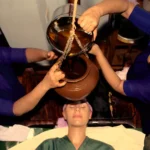Top Sciatica Exercises for Pain Relief: A Detailed Guide!
- August 30, 2025
- admin

The disease known as Sciatica is one of the prevalent forms of painful conditions that is very frequent and at times debilitating, radiating from the lower back to the legs, and it occurs through compression or irritation of the sciatic nerve. This can lead to a lot of pain which may interfere with day-to-day life! Adequate exercise can bring in a lot of relief because it eases the sciatic nerve pressure, allows it to move freely, and tightens muscles that surround the nerve. Here in this guide, we will look at the most effective exercises that will help to relieve sciatica pain and some other methods that will help you to stay fit permanently.
What Is Sciatica?
Sciatica is the term used to describe the pain that extends along the sciatic nerve pathway that travels down your back, through your hips and buttocks and down both sides of your legs. It is not a condition, but a symptom of an underlying issue with the sciatic nerve.
Common Causes of Sciatica:
- Herniated or slipped disc: This is the most widespread reason when the discs of the spine compress the nerve.
- Spinal stenosis: The spine canal that squeezes the nerves.
- Degenerative disc disease: Discs are damaged by the passage of time.
- Piriformis syndrome: A buttock muscle irritates the sciatic nerve.
- Spondylolisthesis: One vertebral bone is sliding over another and pinching the nerve.
Common Symptoms of Sciatica
- Severe pain occurring from the lower back down to the buttocks and legs
- Aching in the leg, numbness or paresthesia.
- Weakness of muscles in the affected leg.
- Increase in pain while sitting, sneezing, or coughing.

How Do Exercises Help with Sciatica?
Targeted exercises and regular exercises are one of the best ways of relieving and managing the pain of sciatica. Although rest may provide immediate relief, long inactivity may even cause more complications. The correct sciatica exercises assist in the following way:
Loosen Tight Muscles
The stretching can aid in relieving the tension in the muscles such as the piriformis, hamstrings, and the lower back muscles, which are all capable of causing the sciatic nerve compression due to their excessive tightness.
Improve Spinal Flexibility
Mobility movements done gently improve the elasticity of the spine and the tissues around the spine which facilitates decreasing stiffness and enhances the range of motion to get more comfort in the long term.
Relieve Nerve Compression
Some of these movements will allow the sciatic nerve to have some space in there, relieving the pressure due to herniated discs or some tightened muscles. This is able to decrease radiating pain and inflammation.
Strengthen Supporting Muscles
Having a better base of support can be achieved through better core and gluteal muscles and lower back support. This will assist in making the right posture and alignment and prevent future flare-ups.
You may also like to read: Stroke Rehabilitation: What to Expect as You Recover
Important Note Before You Begin
It is important to remember the following before any sciatica exercise regimen to ensure safety and efficiency:
Consult a Medical Professional
The advice is always to speak to your doctor or a qualified physiotherapist first before you start exercises, particularly when diagnosed with any spinal condition or living with any pain.
Start Slow and Focus on Form
Start slowly and focus more on form than effort. Inaccurate form may increase symptoms and cause injury.
Listen to Your Body
There will be some pain involved, just a bit, but once the pain intensifies or spreads, stop immediately and make a professional appointment. Never push when there is very sharp pain or when you have shooting pain.
Best Sciatica Exercises for Relief
The type of stretching and exercising movements that include a few gentle stretches may help quite a lot to alleviate the pain in the sciatic nerve and also increase flexibility. These are five of the best sciatica exercises for pain relief:
Piriformis Stretch
This pose will stretch the piriformis muscle, which can lead to issues affecting the sciatic nerve when the piriformis is tight.
Seated Spinal Twist
This variation of yoga assists in relaxing the lower back, as well as spinal movement.
Knee-to-Chest Stretch
One of the easiest movements that stretches the lower back and takes the pressure off the sciatic nerve.
Cat-Cow Stretch (Yoga-Based)
Supports a healthy range of spinal movement and makes it more flexible.
Child’s Pose
A healing yoga posture that stretches the spine, hips and thighs.

Exercises to Avoid with Sciatica
Even though physical activity can help the patient to heal, even some exercises can worsen the sciatica, since they deform the lower back as well as the sciatic nerve which is already strained. It is good to understand what not to do:
High-Impact Cardio
Exercises such as running, jumping or even intense aerobics might shock the spine and lead to the irritation of the sciatic nerve.
Leg Lifts with Straight Legs
The lower back also gets strained when one is lifting both legs or a straight leg when lying down on the back, unless there is core strength.
Deep Forward Bends
Bending over and touching your toes or deep hamstring stretch with a curved spine may squash the sciatic nerve and make the pain worse.
Any Movement That Increases Pain
However, when doing a stretch or exercise that produces sharp, shooting, or radiating pain, do not continue. Pain is an alarm in your body that it is not okay.
Other Sciatica Pain Relief Tips
Exercises are significant in the process of managing sciatica, but it is advisable to complement them with other therapeutic measures to lead to a quicker and more efficient recovery process. The following are some of the options:
Ayurvedic Therapies
Traditional practices of Ayurveda that include Kati Basti, Abhyanga, and Pizhichil system include the use of herbal massages, detoxification, as well as the curbing of inflammation of the nerves, clinical decompression, and natural healing.
Physiotherapy & Pain Management
A specific physiotherapy treatment will help to treat muscle imbalances and correct posture. Electrotherapy, ultrasound, and manual therapy relieve the pain and assist with the process of rehabilitation.
Medications
In other circumstances, the doctor can advise the use of NSAIDs (nonsteroidal anti-inflammatory drugs), muscle relaxants, or neurological medicines to manage acute symptoms until other therapies take effect.
Advanced Medical Treatments
For severe or long-lasting cases, doctors may recommend options like epidural steroid injections, nerve blocks, or even minimally invasive surgery as part of advanced care. In such situations, it’s important to select the best hospital for sciatica treatment to ensure proper care.
FAQs
1. How to reduce sciatic pain?
Sciatic pain can be relieved with a combination of moderate stretching exercises, low-impact exercises, hot/cold treatments, good postures, and, in some circumstances, Ayurvedic massage, physiotherapy, or prescribed drugs. Avoid long sitting and actions that can initiate pain.
2. Is walking good for sciatica?
Sciatica can be mostly alleviated by walking. It is a stimulator to circulation, stops inflammation, and strengthens the muscles. However, wear good supportive footwear, and try to avoid uneven pavements.
3. How to permanently fix sciatica?
A lasting solution, however, is dependent on the underlying problem. A combination of exercise therapy, lifestyle modifications, and holistic therapies, such as those provided in Garden Integrated PMR Hospital, can give permanent relief. In extreme circumstances, complicated medical measures are necessary.
4. What is the main cause of sciatica?
The commonest one is a herniated/slipped disc that puts pressure on the sciatic nerve. The others include spinal stenosis, piriformis syndrome, or degenerative disc disease.
5. What is the best exercise for sciatica?
Among them, the piriformis stretch may be regarded as the most efficient one in case the irritated nerve is the sciatic nerve, and the reason is the tight gluteal muscles. Nevertheless, the most effective exercise might be different for a person, so get an appointment with a physiotherapist.
6. What is the last stage of sciatica?
When it is left untreated, sciatica could result in chronic nerve injury, which causes sustained pain and muscle disabilities or deterioration. This is, however, prevented through early and regular treatment in the majority.
7. How to sit with sciatica?
- Sit with both feet placed on the floor
- Take a lumbar support pillow
- Do not cross your legs
- To reduce the pressure on the nerve, get up and move every 20-30 minutes.
8. What is stage 4 sciatica?
Stage 4 is not medically recognised, but in common usage it will be used to define severe sciatica with debilitating and unrelenting pain, paralysis or abandonment of feeling, or bladder/bowel incontinence, a possible emergency known as cauda equina syndrome. It requires urgent medications.
Sciatic pains can be minimised by the use of gentle stretches, low-impact exercises, and corrective postures. Such complementary therapies as Ayurveda, physiotherapy, and pain management methods can be very successful. Garden Integrated PMR Hospital, Kerala, has all these in one location, with a treatment strategy of getting to the root of sciatica to treat it for lasting relief.



